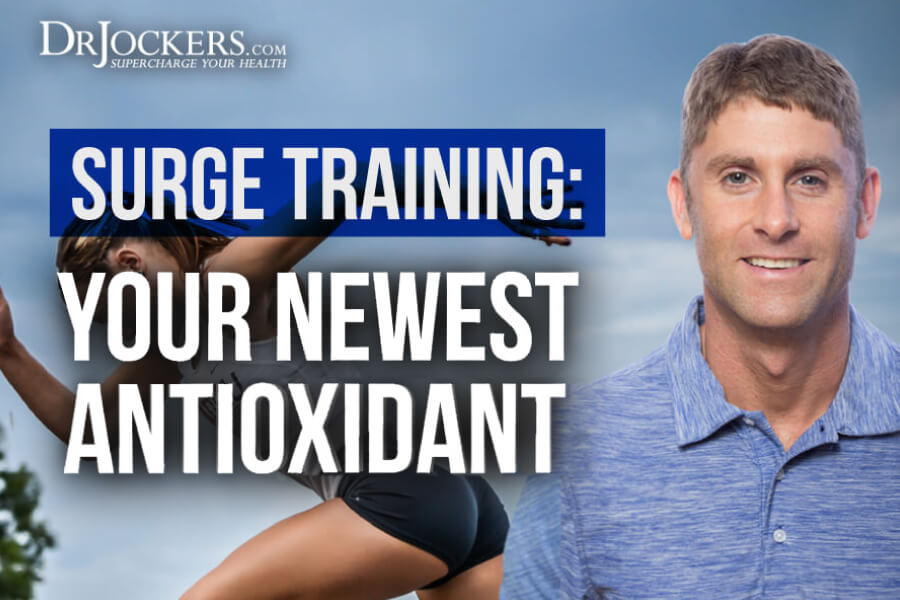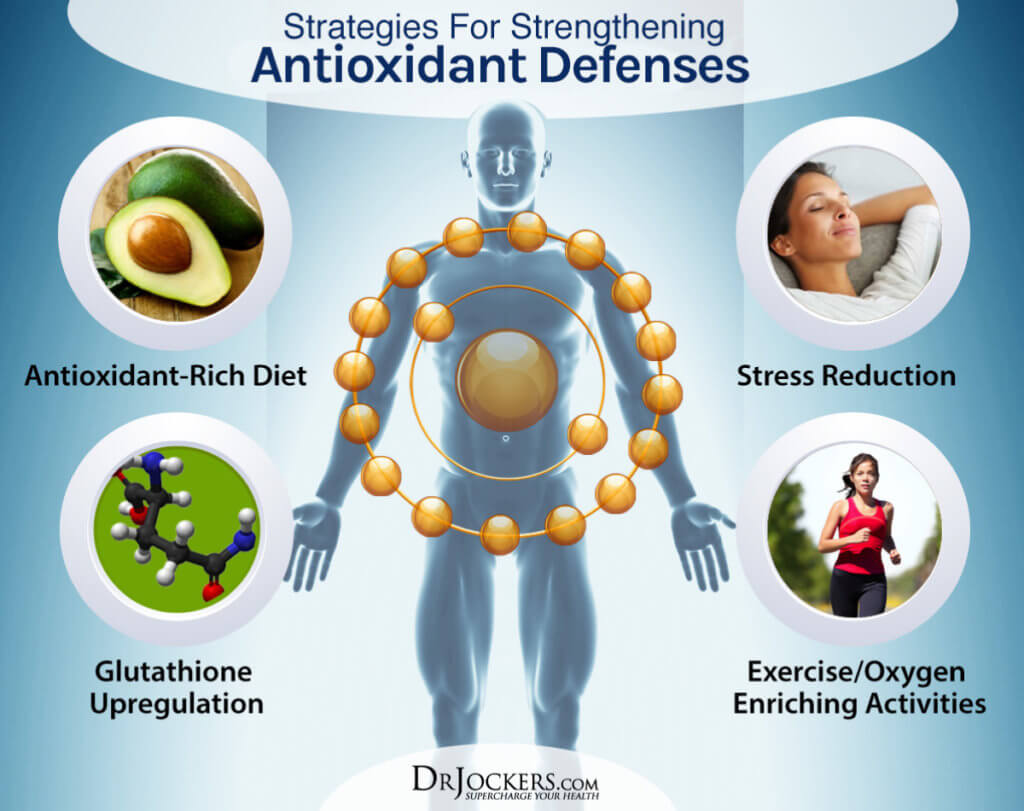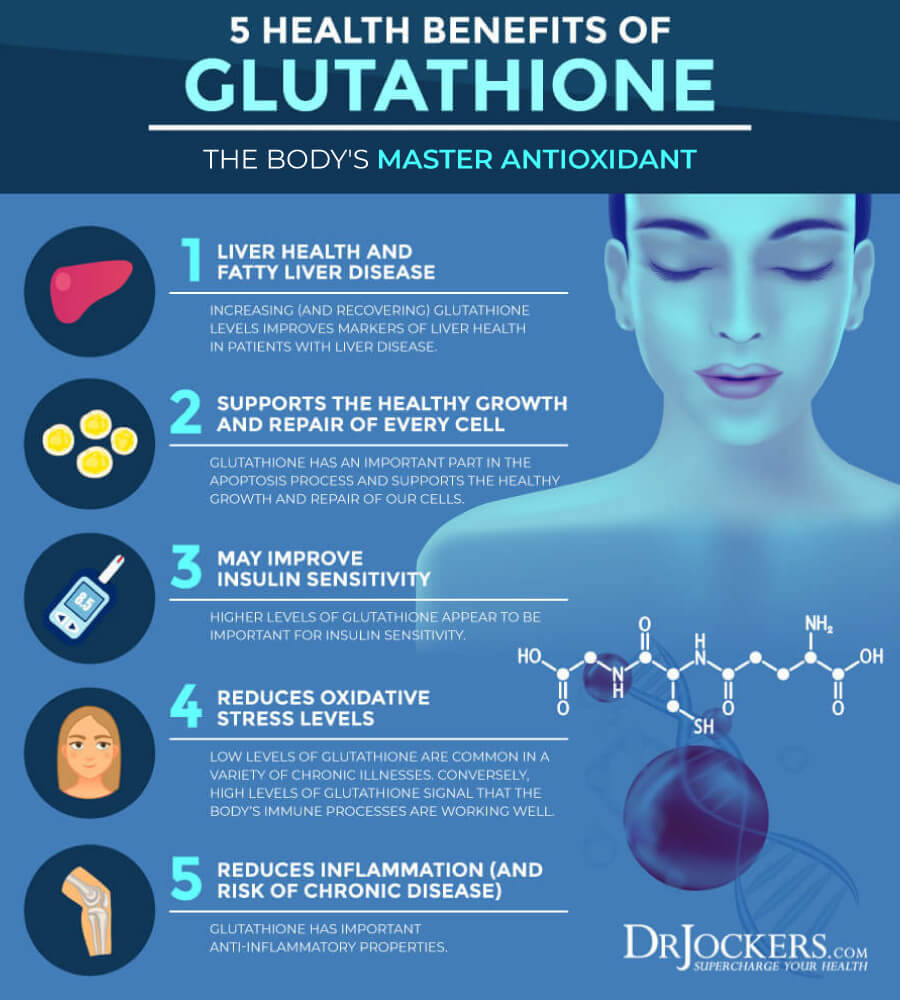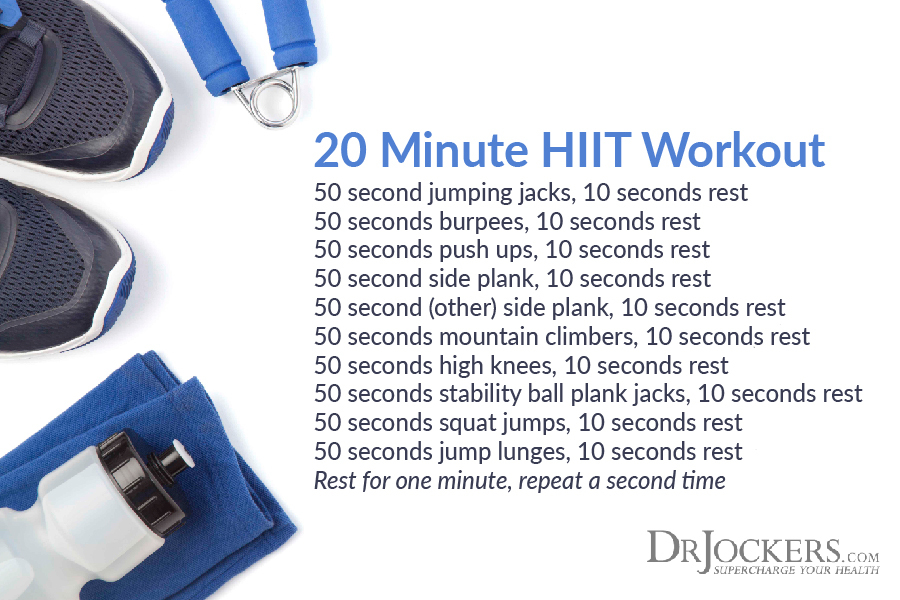
Surge Training is Your Newest Antioxidant
Oxidative stress represents an imbalance between the production of reactive oxygen species (free radicals) and the body’s ability to detoxify the reactive intermediates and repair the resulting damage. High levels of unmanaged oxidative stress accelerate aging and disease formation. In this article Dr. Jockers goes over the newest antioxidant in your healthy lifestyle repertoire.
This newest anti-oxidant is a primary defense against the damaging effects of oxidative stress. The latest research in the fitness world indicates that high intensity exercise acts to enhance the body’s anti-oxidant defense systems (1, 2).
Our body is designed to adapt to the ever-changing demands of nature. Exercise enhances our metabolic rate and dramatically increases oxidative stress levels in our body. In response, the body builds up its newest antioxidant reserves in order to successfully adapt to the greater level of stress.
Damaging Free Radical Formation:
Two particularly dangerous metabolic byproducts include the hydroxyl free radical and malondialdehyde (MDA). The hydroxyl free radical is highly reactive and produced in abundant amounts when the body is under stress.
When hydroxyl free radicals interact with cell membranes they cause lipid peroxidation. This produces highly reactive cross-linking agents such as MDA that further damage cellular components leading to accelerated aging (3).
The end product of the damage MDA produces in the body is a pigment called ceroid lipofuscin. This is a product of oxidized cell membranes and mitochondrial membranes. These pigments appear as “age spots,” or “liver spots” on the skin of our hands and face. They are a sign of excessive oxidative stress and internal damage within the body (4).

Surge Training Boosts Antioxidants:
A recent study in rejuvenation research demonstrated the effects of high intensity exercise training. The study looked at 6 individuals exercising at several different intensities. When the subjects exercised at a higher intensity level they had a greater antioxidant effect (5).
Additionally, the study showed that each participant produced less hydroxyl free radicals at a higher intensity than at a lower intensity.
Another recent study published in the Journal of Strength & Conditioning showed that high intensity resistance training decreased MDA and increased glutathione content. Glutathione is the major antioxidant that our cells produce. Higher levels of glutathione are associated with great health & anti-aging effects on the body (6, 7, 8).

Exercise Intensity and Lactate Production:
Higher intensity exercise maximizes the bodies anaerobic exercise system. The anaerobic system produces lactic acid due to the lowered oxygen state. Most people associate lactic acid with the burn they feel when they exercise. The greater the intensity of exercise = the greater the lactic acid secretion. Researchers now believe that lactic acid may actually act as a free radical scavenger.
High intensity exercise also enhances certain critical enzymes that produce glutathione (9). This is a natural adaptation the body makes due to the higher free radical load. The combination of increased glutathione and lactate gives high intensity exercise an incredibly powerful newest antioxidant and anti-aging effect.

Surge Training and Glutathione:
Surge training utilizes the principles of very high intensity anaerobic exercise for short spurts of time. This style of exercise produces large amounts of lactic acid and glutathione. A consistent training program challenges the body to become more effective at buffering acidity and free radicals in the system.
This adaptation lessens the burden of oxidative stress and allows us to age with grace and beauty. Challenge your body and get stronger and healthier! For more info on how to activate your body’s innate healing ability, check out my free Activating Autophagy report.
Sources For This Article Include:
1. Parker L, McGuckin TA, Leicht AS. Influence of exercise intensity on systemic oxidative stress and antioxidant capacity. Clin Physiol Funct Imaging. 2014 Sep;34(5):377-83. PMID: 24283399
2. Bogdanis GC, Stavrinou P, Fatouros IG, Philippou A, Chatzinikolaou A, Draganidis D, Ermidis G, Maridaki M. Short-term high-intensity interval exercise training attenuates oxidative stress responses and improves antioxidant status in healthy humans. Food Chem Toxicol. 2013 Nov;61:171-7. PMID: 23747717
3. Romero FJ, Bosch-Morell F, Romero MJ, et al. Lipid peroxidation products and antioxidants in human disease. Environmental Health Perspectives. 1998;106(Suppl 5):1229-1234.
4. Wang X, Liao Y, Li G, Yin D, Sheng S. A comparative study of artificial ceroid/lipofuscin from different tissue materials of rats. Exp Aging Res. 2008 Jul-Sep;34(3):282-95. PMID: 18568984
5. Nagasawa J, Kikkawa K, Takai T, Sakaguchi A, Noguchi I, Kizaki T, Ohno H. Exercise intensity and antioxidant ability. Rejuvenation Res. 2010 Apr-Jun;13(2-3):172-4. PMID: 20017613
6. Cakir-Atabek H, Demir S, PinarbaŞili RD, Gündüz N. Effects of different resistance training intensity on indices of oxidative stress. J Strength Cond Res. 2010 Sep;24(9):2491-7. PMID: 20802287
7. Mytilineou C, Kramer BC, Yabut JA. Glutathione depletion and oxidative stress. Parkinsonism Relat Disord. 2002 Sep;8(6):385-7. PMID: 12217624
8. Schulz JB, Lindenau J, Seyfried J, Dichgans J. Glutathione, oxidative stress and neurodegeneration. Eur J Biochem. 2000 Aug;267(16):4904-11. PMID: 10931172
9. Vina J, Sanchis-Gomar F, Martinez-Bello V, Gomez-Cabrera M. Exercise acts as a drug; the pharmacological benefits of exercise. British Journal of Pharmacology. 2012;167(1):1-12.



